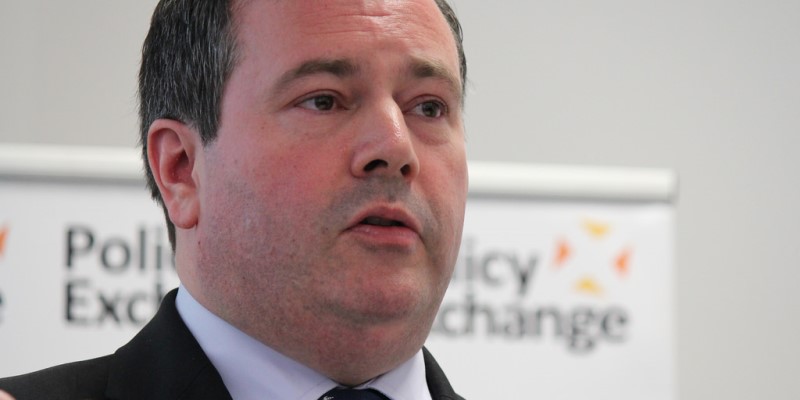Alberta’s fiscal plan—put the pedal to the metal

Based on last week’s provincial budget, the Kenney government in Alberta plans to return to sounder fiscal ground. Since 2008, the province has run large deficits, turning a balance sheet in the black up to $35 billion to a net debt of $37 billion. To eliminate the deficit, the government’s four-year plan will cut program spending by 1.6 per cent over four years.
However, there are grounds to defend a speedier plan. In recent years, thanks to advancement in statistical methods, economists have been able to improve their study of fiscal adjustment plans and identify two important empirical facts.
Firstly, they identified which types of fiscal plans are the most auspicious for economic growth. Fiscal consolidations based on tax increases have a larger negative effect on economic growth than those based on reduction in expenditures. In fact, the effects from spending-based efforts to reduce the deficit vanish after a short period. In contrast, tax-based efforts have large and persistent effects on economic growth.
Second, they identified which types of efforts tend to be more successful. Efforts to balance budgets by cutting expenditures rather than raising taxes tend to be successful. Attempts at raising revenues through tax increases are less successful. This is in part because tax increases reduce economic growth to a certain degree, which means growth in revenue slows.
However, this came with an important addendum.
Successful fiscal adjustments tend to be those that are swift. Protracted adjustments could fail to allay fears about fiscal sustainability and may also increase the likelihood of a citizen backlash that reverses the reforms. Thus, the adjustment may fail to reduce the deficits significantly and tackle the problem of government debt. To be sure, there’s a “sweet spot” for the pace of reform, which implies reforms may be “too slow,” which is probably the case in Alberta.
Why would Alberta be going too slow?
Olivier Blanchard, an economist who was relatively cool towards austerity efforts in the beginning of this decade, noted that one problem with austerity would occur with rigid labour markets. When fiscal plans are enacted, even when they are based on spending cuts, an adjustment must happen. The resources liberated by government are not instantaneously reallocated to more valued private-sector uses.
There’s a cost to this adjustment as well, which is why the literature finds a small initial effect from spending cuts.
However, if labour markets are rigid, the adjustment process makes it hard for laid-off workers to find new jobs. Long spells of unemployment tend to scar workers by reducing their ability to obtain employment later. But crucially, measures of labour rigidity—well embodied in the Fraser Institute’s Economic Freedom of North America index—suggest Alberta has one of the most flexible labour markets in the country. This fact counts in favour of a faster pace of fiscal adjustment.
This point also suggests something important that everyone in the literature on fiscal adjustments agrees on—fiscal adjustments are best when coupled with other reforms. When policy proposals increase competition and facilitate entrepreneurship, the positive effects of fiscal adjustments are heightened and the negative effects are dampened. This is important because it suggests that the best pace for policymakers depends entirely on how fast they want the adjustment to go.
If they want the plan to be successful (in reducing the debt problem and reducing the deficit) and come with long-term positive effects, they can find a better “sweet spot” by enacting accompanying reforms. One example of pushing the sweet spot in favour of faster reform is to tie spending reductions to promises of reductions in corporate tax rates that stimulate private investments.
To be sure, the announcement of Alberta’s new fiscal direction is welcomed. Any efforts at eliminating budget deficits are good moves. Yet there are no reasons to take things slow on the route to prosperity. Better speed things up, if possible.

